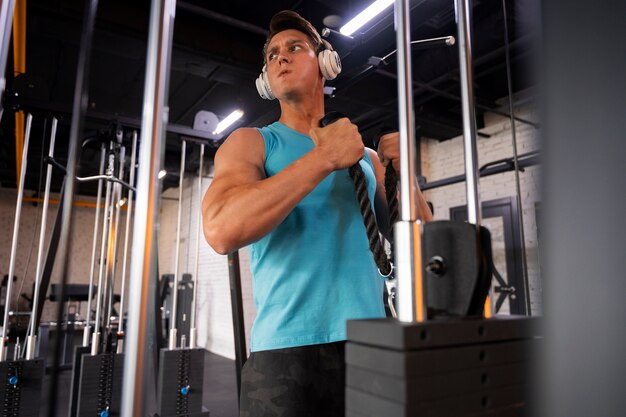Broad shoulders are typically seen as signs of strength and vitality. While this trait has traditionally been linked more to men, many women are now also seeking to broaden their shoulders. This guide will help you understand shoulder anatomy, how to make your shoulders wider, and the best exercises to achieve that.
Understanding Shoulder Anatomy
The shoulder area, located between the neck and the upper torso, is the broadest part of the human body. Your shoulder width is mainly determined by your bone structure, including the length of your collarbones and the arrangement of your shoulder joints.
The deltoid muscles also play a significant role in shoulder width and can be developed through specific exercises. The deltoids, divided into three parts鈥攆ront, lateral, and rear鈥攁re crucial for broadening the shoulders.
– Front Deltoid: Handles the flexion of the upper arm, forward movement of the shoulder, and internal rotation.
– Lateral Deltoid: Manages the true abduction of the upper arm and the forward position of the shoulder.
– Rear Deltoid: Responsible for extending the upper arm, backward movement of the shoulder, and external rotation.
Among these, the lateral deltoid is the most important for making your shoulders appear wider.
Effective Exercises for Broadening Shoulders
To widen your shoulders, focus on exercises that involve true abduction of the humerus, like the lateral raise. Shoulder training can be complex due to the involvement of other muscle groups and the trapezius muscles, which span the shoulder and back areas.
Top exercises for broader shoulders include lateral raises, chest pulls with an EZ barbell, and complex moves like the Arnold press and military press. Proper technique and controlled volume are vital for effective shoulder training.
Principles of Muscle Growth
Muscle growth comes from two factors:
– Myofibrillar hypertrophy: This is an increase in the contractile tissue, achieved by lifting heavy weights with low repetitions and full recovery periods.
– Cytoplasmic hypertrophy: This involves increasing other components in the muscle cells, like water and glycogen, stimulated by medium to high reps and moderate weights.
In addition to training, consuming more calories than you burn is necessary for muscle growth. Supplements such as creatine monohydrate and beta-alanine can also support this process.
Training Frequency and Volume
How often you train your shoulders depends on several factors, including how much they are used in other exercises. Generally, training shoulders once a week may be sufficient, but if your main goal is broad shoulders, focus on developing the lateral deltoid.
Remember, your shoulders are also engaged during other workouts, like chest presses (front deltoid) and back exercises (rear deltoid).
The Importance of Technique
Shoulder training doesn’t usually tax your central nervous system heavily, but it does demand precise technique to avoid injuries. Focus on quality reps, stay concentrated, and know when to stop to avoid overtraining. This ensures that your quest for broader shoulders remains effective and safe.
Conclusion
To broaden your shoulders, you need to understand the anatomy, do the right exercises, and follow muscle growth principles. It takes patience, consistency, and attention to detail, but with the right approach, you can see significant results in a few months.






